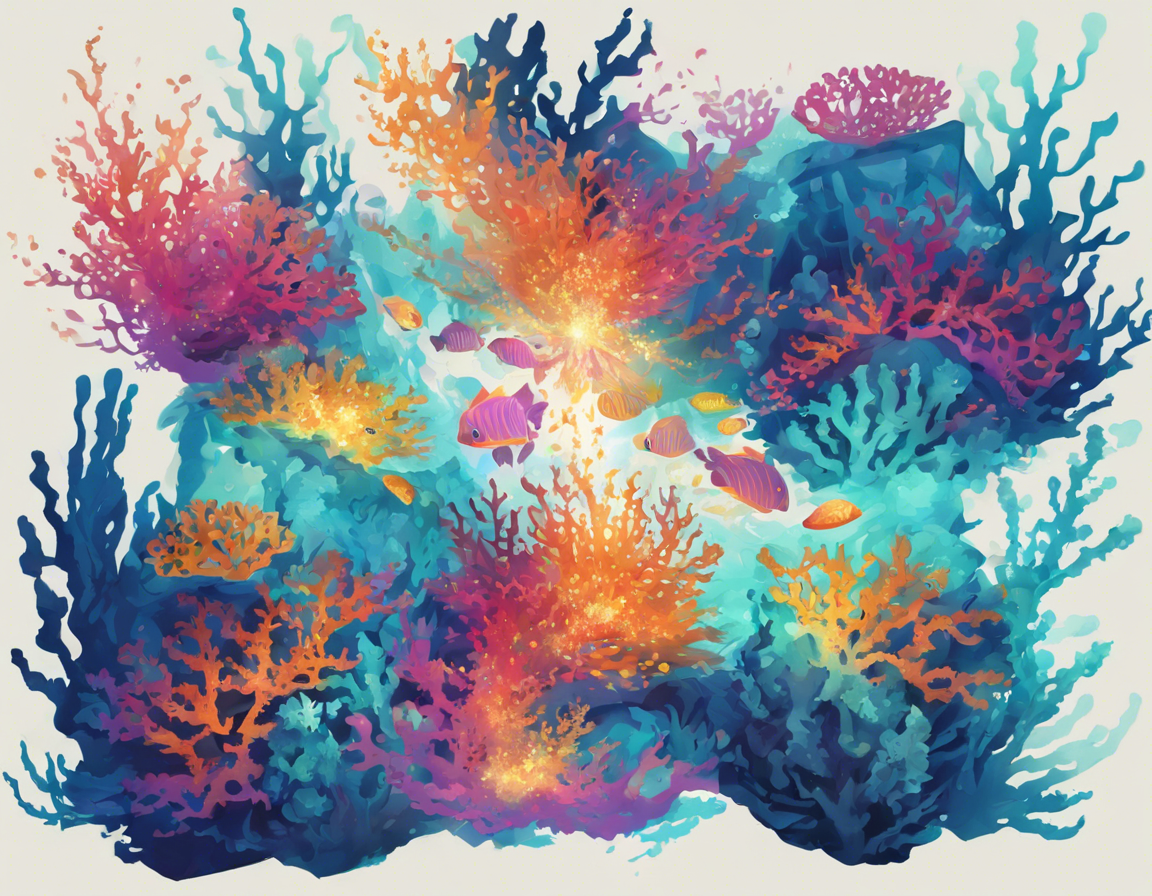Reef sparks, also known as bioluminescent plankton or dinoflagellates, are a mesmerizing natural phenomenon that occurs in oceans worldwide. These tiny organisms emit a beautiful glow when disturbed, creating a magical display that enchants all who witness it. In this article, we will explore the beauty of reef sparks, diving into what they are, where they can be found, and how they create their radiant light. We will also discuss the significance of reef sparks in marine ecosystems and their impact on the environment.
Understanding Reef Sparks
Reef sparks are a type of single-celled plankton called dinoflagellates that possess the unique ability to produce light through a chemical reaction. This phenomenon, known as bioluminescence, is a form of chemiluminescence where light is emitted by living organisms. The light produced by reef sparks is typically blue or green in color and can be activated by various stimuli, such as movement or disturbance in the water.
Where to Find Reef Sparks
Reef sparks can be found in oceans across the globe, from tropical waters to temperate seas. They are most commonly observed in areas with nutrient-rich waters, such as coastal regions, where they play a vital role in the marine ecosystem. Some of the best places to witness reef sparks include:
- Maldives: The bioluminescent beaches of the Maldives offer a stunning display of reef sparks at night.
- Puerto Rico: Mosquito Bay in Vieques, Puerto Rico, is home to one of the brightest bioluminescent bays in the world.
- Jervis Bay, Australia: This pristine marine sanctuary is known for its vibrant reef sparks that light up the waters at night.
The Science Behind Bioluminescence
The light produced by reef sparks is generated through a chemical reaction involving luciferin, a light-emitting compound, and luciferase, an enzyme that catalyzes the reaction. When the dinoflagellates are disturbed, a series of biochemical reactions occur within their cells, leading to the emission of light. This natural light show not only captivates observers but also serves as a defense mechanism for the plankton, startling predators and potential threats.
Ecological Importance of Reef Sparks
Reef sparks play a crucial role in marine ecosystems, serving as both predators and prey in the ocean food chain. As primary producers, they are vital for the health of the ocean, providing food for a variety of marine organisms, including zooplankton and small fish. Additionally, their bioluminescent glow helps attract prey and communicate with other organisms in the water. The presence of reef sparks is a sign of a healthy and balanced marine environment, indicating the abundance of nutrients and biodiversity in the ecosystem.
Conservation Efforts and Threats
Despite their ecological significance, reef sparks face threats from human activities, such as pollution, coastal development, and climate change. These factors can disrupt the delicate balance of marine ecosystems, leading to a decline in the population of dinoflagellates and other marine species. Conservation efforts are essential to protect these bioluminescent organisms and preserve their natural habitats for future generations to enjoy.
FAQs about Reef Sparks
-
Are reef sparks harmful to humans?
Reef sparks are not harmful to humans and do not pose any danger. In fact, their bioluminescent glow is a natural and beautiful phenomenon that adds to the enchantment of the ocean. -
Can reef sparks be seen during the day?
Reef sparks are most visible at night when the surrounding waters are dark. Their light is more prominent in low-light conditions, creating a magical display in the darkness. -
Do all dinoflagellates produce bioluminescence?
While not all dinoflagellates are bioluminescent, many species have the ability to produce light. Each species may exhibit different patterns and colors of bioluminescence. -
What causes the glow of reef sparks to fade?
The bioluminescent glow of reef sparks can fade due to various factors, including changes in water temperature, nutrient availability, and disturbances in their environment. -
Can reef sparks be artificially replicated for commercial use?
Researchers have studied the bioluminescent properties of reef sparks for potential applications in biotechnology and environmental monitoring. However, artificially replicating their unique glow remains a challenge.
In conclusion, reef sparks are a captivating wonder of the ocean, showcasing the beauty and diversity of marine life. Their bioluminescent glow illuminates the waters at night, serving as a testament to the marvels of nature. By learning more about reef sparks and raising awareness about their importance, we can continue to appreciate and protect these luminous organisms for generations to come.



